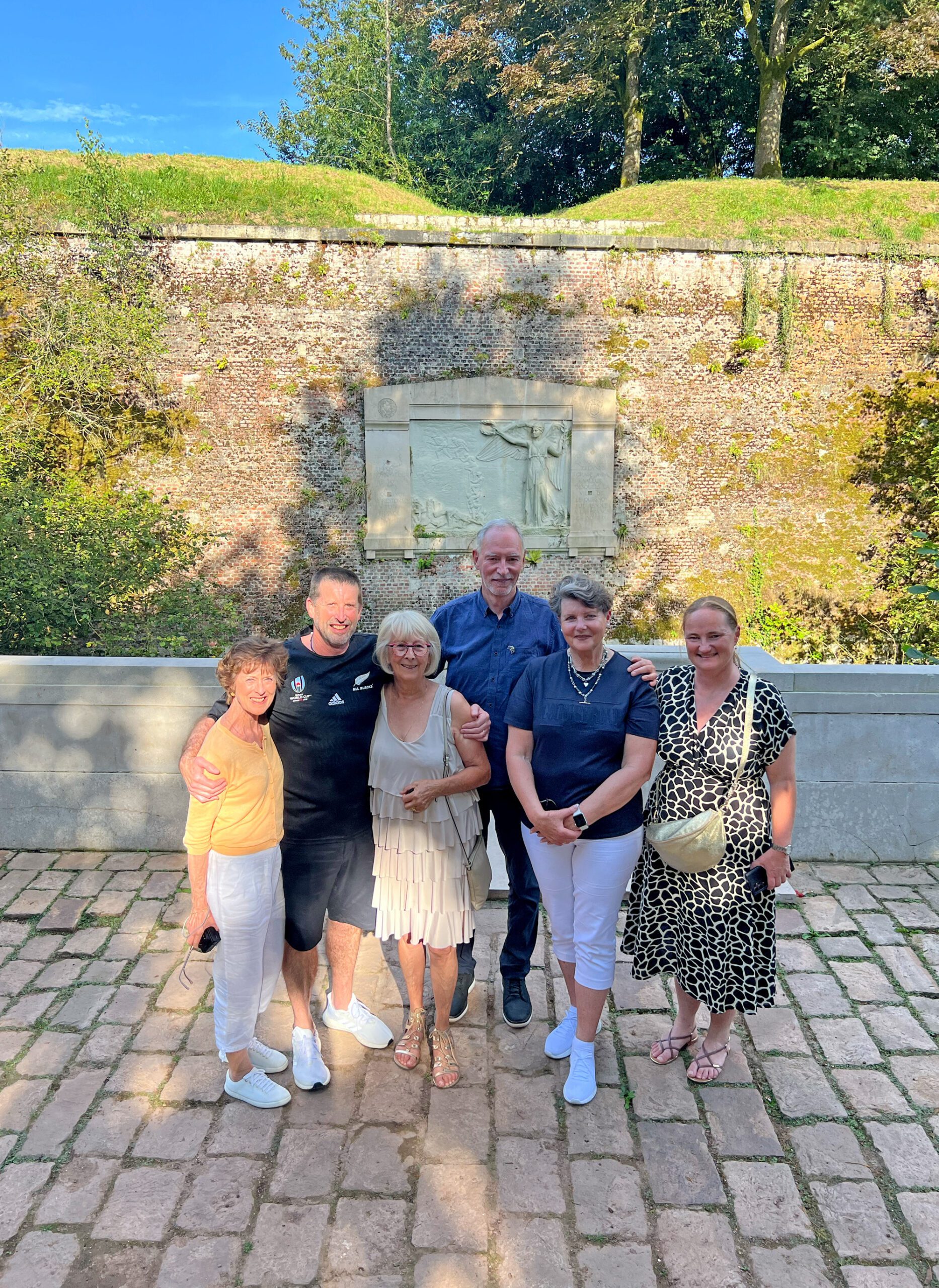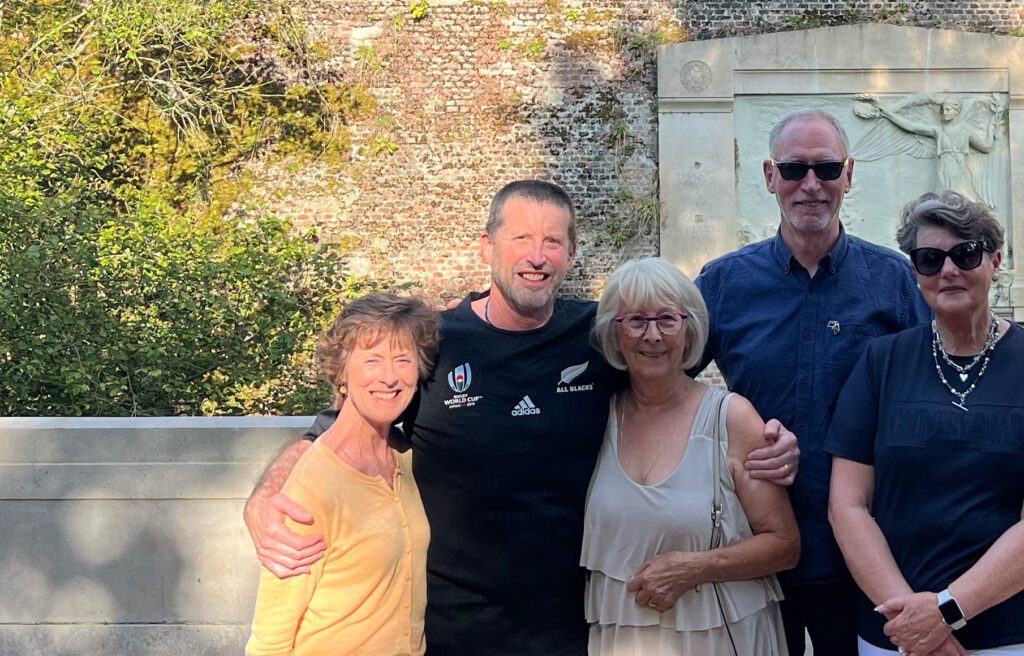Kiwi couple make 10th pilgrimage to town
Warwick Mitchell always brings his bagpipes when he comes to Le Quesnoy.
He stands on the town’s ramparts and plays to honour the soldiers who died during the liberation of the town by Kiwi troops on November 4, 1918, during World War One.
“It’s my way of paying a simple tribute and my thanks,” says the Aucklander and loyal All Blacks fan.
Warwick and his wife Catherine have visited Le Quesnoy 10 times since first coming here in 2006.
“We fell in love with the place and after the first year I brought my bagpipes, and now I bring them every year. Bagpipes evoke a huge amount of emotion, not just for the people who are listening, but for me too,” he says.

The couple first heard about the story of Le Quesnoy when they met Herb and Ruth Farrant, two key people behind the establishment and development of the NZ Liberation Museum – Te Arawhata. Herb Farrant, FNZIOB is the Founder of Te Arawhata. Herb told them about the museum project he was involved in to commemorate the liberation and the New Zealand troops involved.
They will never forget
Catherine says it is important for her and Warwick to keep visiting – and bringing their friends – as an acknowledgement of both the New Zealand soldiers and the town.
“The town just never forgets,” she says. “I think to us, we keep coming here because we have a freedom that they almost completely lost.
“It’s also important that New Zealanders know what it means for the people of this small town. They have never forgotten and on the fourth of November every year they commemorate and they remember the New Zealand soldiers who came and liberated them.”
The Mitchells have brought a lot of friends to the town over the years, and have made many French friends along the way, including Le Quesnoy Mayor Marie-Sophie Lesne, Raymonde Dramez, the former Mayor of neighbouring Beaudignies, and resident Helene Le Bon, who was involved in the 100-year commemorations of the Liberation in 2018.
Family history
Warwick had seven great uncles who fought in World War One – with five of them returning.
“There is some history there,” he says. “But from the perspective of this town, there is something very deep and emotional about understanding what the troops did, how grateful the people of the town are, and remembering the ones who never came home.
“That’s been our motivation over the years, to pay our respects to those that never came home, that came on a so-called adventure and were killed liberating this town.”
He believes Te Arawhata, which he and Catherine visited for the first time this year, is a fine tribute to the soldiers, to the town, and importantly the friendship that the people of Le Quesnoy share with New Zealand.
“We love this town and it’s very special to us. To see what has been done here, it’s outstanding and our hope is that now we have Te Arawhata more Kiwis will make a point of coming to Le Quesnoy. If you get the opportunity, and you come to France, absolutely make this a pilgrimage.”
